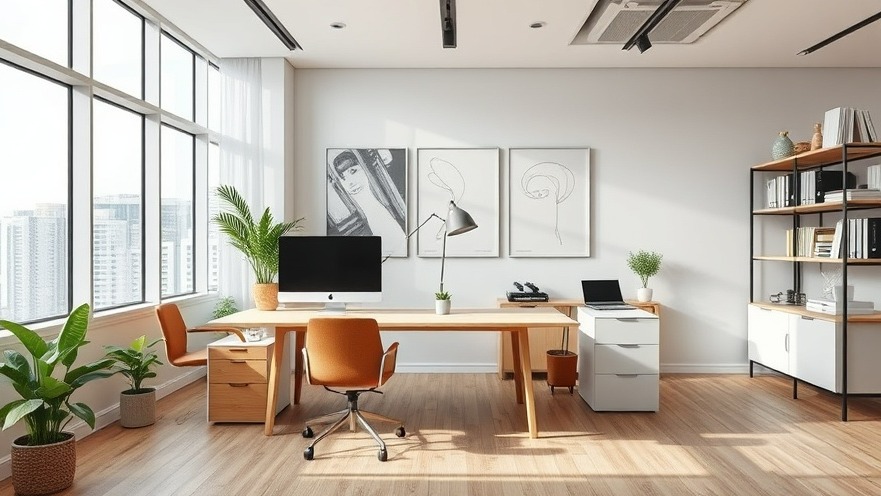
Exploring the Future of Design: Key Events in April
For digital nomads, the connection between design and workspace functionality is increasingly vital. This April, several architecture and design events around the globe promise exciting insights that can directly inform the ways we think about remote working environments. Here’s a roundup of the five most significant happenings, all of which have unique aspects appealing to those keen on creating comfortable and efficient workspaces.
Architecture Matters: Emphasizing Sustainable Design
Taking place from April 2 to 3 in Germany, the Architecture Matters conference brings together thought leaders to discuss the theme "less, but better". The focus here is on minimizing bureaucracy in architecture while enhancing sustainability efforts. For remote workers, understanding these principles is crucial. Efficient designs translate to better work environments, minimizing distractions and promoting focus.
Dive Into Creative Expression at DesignMarch
From April 2 to 6 in Iceland, DesignMarch offers a diverse exploration of design disciplines, from fashion to landscape architecture. This festival promotes exhibitions and workshops across ten districts of Reykjavík. For digital nomads, participating in such creative dialogues can spark new ideas on how to personalize and adapt their workspaces to enhance productivity and inspire creativity.
Experience the Giants of Design: Milan Design Week
April 7 to 13 marks the return of Milan Design Week, the world’s largest design event. Known for its expansive activities, it coincides with the prestigious Salone del Mobile fair. Digital nomads can benefit from Milan's innovation, picking up trends and ergonomic furniture options that can transform their remote workspaces into havens of comfort and productivity.
Expo 2025 Osaka: A Look into the Future
Running from April 13 to October 13 in Japan, Expo 2025 Osaka will feature innovative pavilions focusing on sustainability and technology. As companies showcase designs that emphasize both aesthetic appeal and functionality, remote workers can draw inspiration from these innovations and reflect on how they can incorporate sustainable practices into their own work environments.
Boston Design Week: Connecting Communities Through Design
From April 22 to May 4, Boston Design Week will host a variety of events focusing on landscape design, urban planning, and social impact design. For nomads, this is a significant opportunity to network and explore how community design influences personal workspace setups. Engaging with local designers can provide insights into creating a workspace that not only serves individual needs but also fosters connectivity and collaboration.
Why These Events Matter to Digital Nomads
Attending these events or exploring their outcomes can help digital nomads stay abreast of current design trends and ergonomic principles. The shift towards sustainable, functional, and socially responsible design is crucial for creating effective remote work environments that prioritize health and productivity.
So as these events unfold, consider how the principles discussed and demonstrated can influence your own workspace. Whether it's through embracing sustainable materials or incorporating innovative organizational tools, the possibilities are endless for enhancing remote work experiences.
For those interested in elevating their workspace efficiency and comfort, these insights from April’s design events will be invaluable tools. Explore the upcoming designs, innovations, and discussions that can pave the way for a more ergonomically sound and productive work environment.
 Add Row
Add Row  Add
Add 




Write A Comment